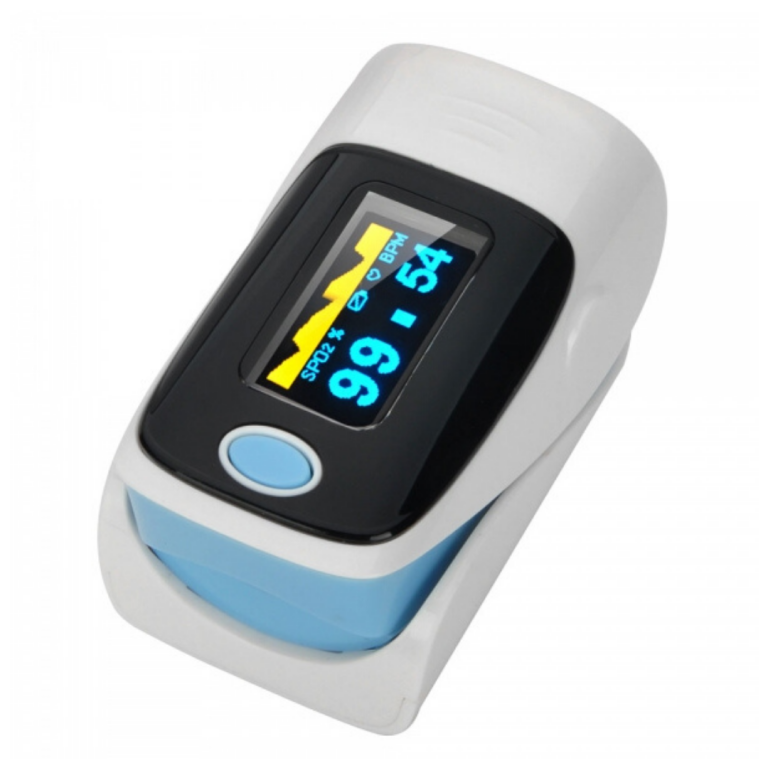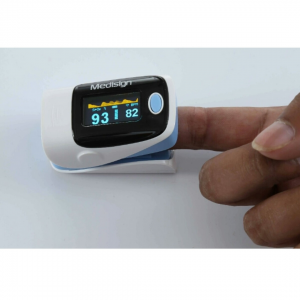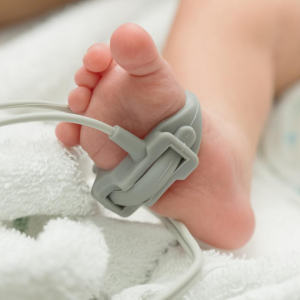
A pulse oximeter is a small, clip-like device that attaches to a body part to detect a pulse and measure peripheral oxygen saturation SpO2 in a person. Oximeters are probes that are either worn on the wrist, toes, finger-held or ear probes and come with no risks. They have become essential diagnostic tools due to their portability, ease of use, and applicability in a wide range of clinical settings.
Pulse oximetry is a noninvasive and painless method for monitoring a person's oxygen saturation level in their blood that uses an oximeter. The oximeter is usually used in emergency rooms for critical care patients. Its reading of peripheral oxygen saturation (SpO2) is not always identical to the more desirable reading of arterial oxygen saturation (SaO2) from arterial blood gas analysis. The two are correlated well enough that the safe, convenient, noninvasive, inexpensive pulse oximetry method is valuable for measuring oxygen saturation in clinical use.

Karl Matthes (1905–1962), a German physician, developed the first 2-wavelength ear oxygen saturation meter device in 1935 which had red and green filters.
Later in the 1940s, Glenn Allan Millikan made the first actual oximeter. In 1949, Wood added a pressure capsule to squeeze blood out of the ear so as to obtain an absolute oxygen saturation value when blood was readmitted. During that era, it was difficult to implement because of unstable photocells and light sources. An ear probe was assembled in 1964 by Shaw as the first absolute reading ear oximeter using eight wavelengths of light.
In 1972, two bioengineers, Takuo Aoyagi and Michio Kishi, developed pulse oximetry that used the ratio of red to infrared light absorption of pulsating components at the measuring site. It was first tested in patients in 1975 then in 1980, Biox commercialized it.
With time, this device continue to go through advancement processes with changing technology. A recent study done to test motion-resistance showed that new improvements in technology have resulted in better accuracy and reliability during patient motion.

There are two types in reference to size; Adult/pediatric probes and infant probes. Infant probes are used by babies who are less than a year old while adult probes are for anyone more than a year old. Adult/pediatric probes are the finger, toe or lobe of the ear. Infant probes are the foot or palm of the hand and the thumb or big toe. The probes are very fragile and any small mishandling can damage them. They need to be handled carefully when putting them on either on the ear, toe or the finger. Make sure it is positioned properly and fits well.
An oximeter uses two small light-emitting diodes (LEDs) facing a photodetector through a translucent part of the patient's body. One LED is red, with wavelength of 600-750 nm, and the other is infrared with a wavelength of 850-1000 nm. The principle of pulse oximetry is based on light absorption characteristics of oxygenated and deoxygenated hemoglobin. Oxygenated hemoglobin absorbs more infrared light and allows more red light to pass through. Deoxygenated (or reduced) hemoglobin absorbs more red light and allows more infrared light to pass through.
Normal SpO2 is 95% or above. During anaesthesia, this rate should be maintained. When the SpO2 falls below 90%, the patient is becoming seriously hypoxic. Hypoxia is a condition in which the body is deprived of adequate oxygen supply at the tissue level. This can be caused by either the anesthesia drugs administered, the equipment itself, blood circulation, inadequate breathing or even airway obstruction. In such cases, check the patient then increase the oxygen flow. Afterwards, ventilate the patient by hand to make sure the lungs are filling with oxygen.

Oximeters are enhanced memory for longer studies, enhanced memory for longer studies, longer battery life allows more data collection. Other features include; the use of standard batteries for a longer battery life, bluetooth enabled for wireless data transfer and easy to assemble and use for patients at home.
Pulse oximeters monitor the health of individuals with any type of condition that can affect blood oxygen levels. These conditions include:
Chronic obstructive pulmonary disease (COPD)
Asthma
Pneumonia
Lung cancer
Heart failure
Congenital heart defects
The purpose of pulse oximetry is to check how well your heart is pumping oxygen through your body. Other uses include;

There are many variabilities that must be accounted for to ensure accurate calculation of oxygen saturation by pulse oximetry.
Other factors include poor perfusion, venous and tissue pulsation by mechanical force from nearby arteries, patient temperature, pulsatile variations in tissue thickness in the light path among others.
https://en.wikipedia.org/wiki/Pulse_oximetry
The Accuracy of 6 Inexpensive Pulse Oximeters
https://www.healthline.com/health/pulse-oximetry
https://web.archive.org/web/20150211061647/http://frca.co.uk/SectionContents.aspx?sectionid=112
Please share your comments below.